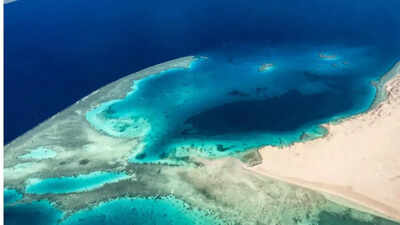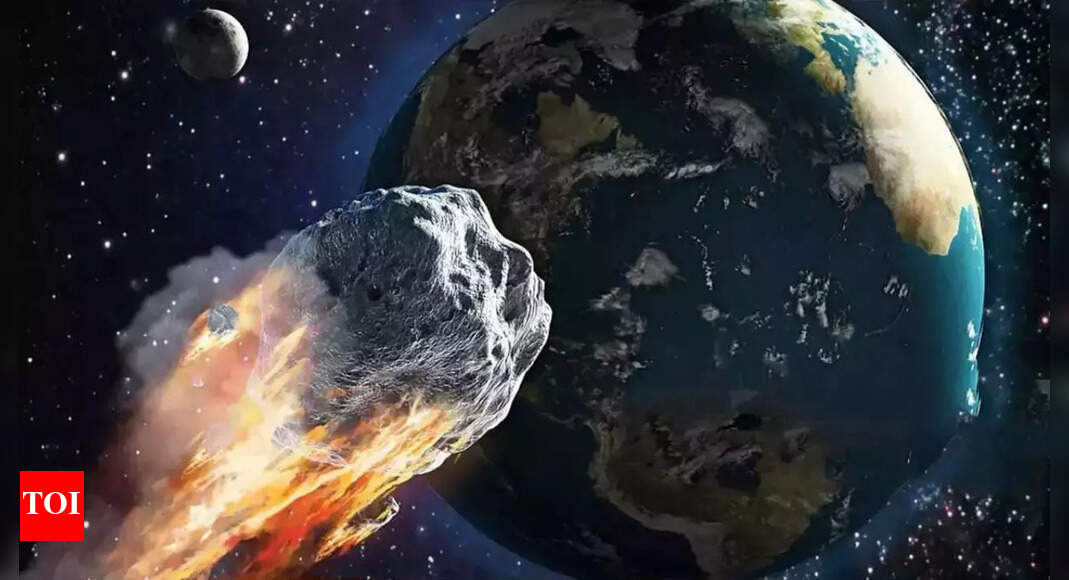The Red Sea vanished from Earth for 100,000 years: What brought it back will astonish you |

Millions of years ago, the Red Sea, now a vital marine region, disappeared from the Earth’s surface. Cut off from the world’s oceans, its basin gradually dried into a vast salt desert. About 6.2 million years ago, a catastrophic flood refilled the basin, carving the Bab el-Mandab Strait and shaping the Red Sea’s modern channels. This sudden influx of seawater restored marine ecosystems, allowing corals and diverse marine life to flourish once again. Geological studies using seismic imaging, fossils, and geochemical analysis reveal that the Red Sea endured nearly 100,000 years of desiccation before its dramatic revival. Its history demonstrates the remarkable resilience of Earth’s oceans and offers crucial insights into how tectonics, climate, and catastrophic events shape marine environments over millions of years.
How the Red Sea dried up: From a thriving sea to a 100,000-year salt desert
As reported by Discover Magazine, geology has revealed that Earth’s oceans and seas have undergone extraordinary changes over millions of years. One of the most striking phenomena is desiccation, when a body of water is cut off from the open ocean and slowly evaporates, leaving behind thick layers of salt and barren desert landscapes.The Mediterranean Sea famously underwent this process during the Messinian Salinity Crisis, drying up almost completely and remaining parched for nearly 700,000 years before being refilled in the Zanclean Flood. Similarly, researchers at King Abdullah University of Science and Technology (KAUST) in Saudi Arabia discovered that the Red Sea experienced its own desiccation around 6.2 million years ago.When tectonic shifts severed the Red Sea’s connection to the Mediterranean, the basin became a closed water body bordered by present-day Egypt and Saudi Arabia. Blocked from the Indian Ocean by a volcanic ridge to the south, the Red Sea basin gradually evaporated, leaving a salt-encrusted desert for roughly 100,000 years.
How a massive flood refilled the Red Sea and shaped its land
The Red Sea’s dramatic revival came in the form of a massive flood approximately 6.2 million years ago. Using seismic imaging, microfossil studies, and geochemical dating, the KAUST research team confirmed that this deluge refilled the basin, transforming it from a dry salt plain into a thriving marine environment.“This event represents one of the most extreme environmental episodes in Earth’s history,” said lead author Tihana Pensa. “The sudden influx of seawater restored marine conditions and permanently reconnected the Red Sea to the Indian Ocean.”The flood carved out the Bab el-Mandab Strait, which now serves as the Red Sea’s southern gateway to the Indian Ocean. Evidence of the flood remains visible today in the form of a 200-mile-long underwater canyon, sculpted by the torrents of water that rushed into the basin during the catastrophic event.
Long history of the Red Sea: From ancient lakes to a thriving marine ecosystem
The Red Sea has a much longer history than its 6.2-million-year rebirth. The sea formed roughly 30 million years ago as the African Plate began diverging from the Arabian Plate. Initially, this tectonic activity created a chain of lakes along a narrow valley that eventually connected to the Mediterranean. Fossil records indicate that marine life thrived during this early period, until evaporation and isolation caused the basin to dry once again.Today, the Red Sea supports extensive coral reefs and diverse marine ecosystems, sustained by its continuous exchange with the Indian Ocean. The catastrophic flood not only refilled the basin but also established a stable marine environment that continues to nourish life to this day. The Red Sea’s disappearance and revival highlight the resilience of Earth’s oceans. Interestingly, its desiccation occurred nearly a million years before the Mediterranean’s Messinian Salinity Crisis ended, showing that extreme events can unfold on different geological timelines.“This research enhances our understanding of how oceans form, expand, and recover,” explained co-author Abdulkader Al Afifi of KAUST. “The Red Sea serves as a natural laboratory for studying oceanic processes, massive salt deposits, and the interplay between climate, tectonics, and marine environments over millions of years.” Also Read | 167-million-year-old fossil of Breugnathair elgolensis reveals how snakes first evolved from lizards





